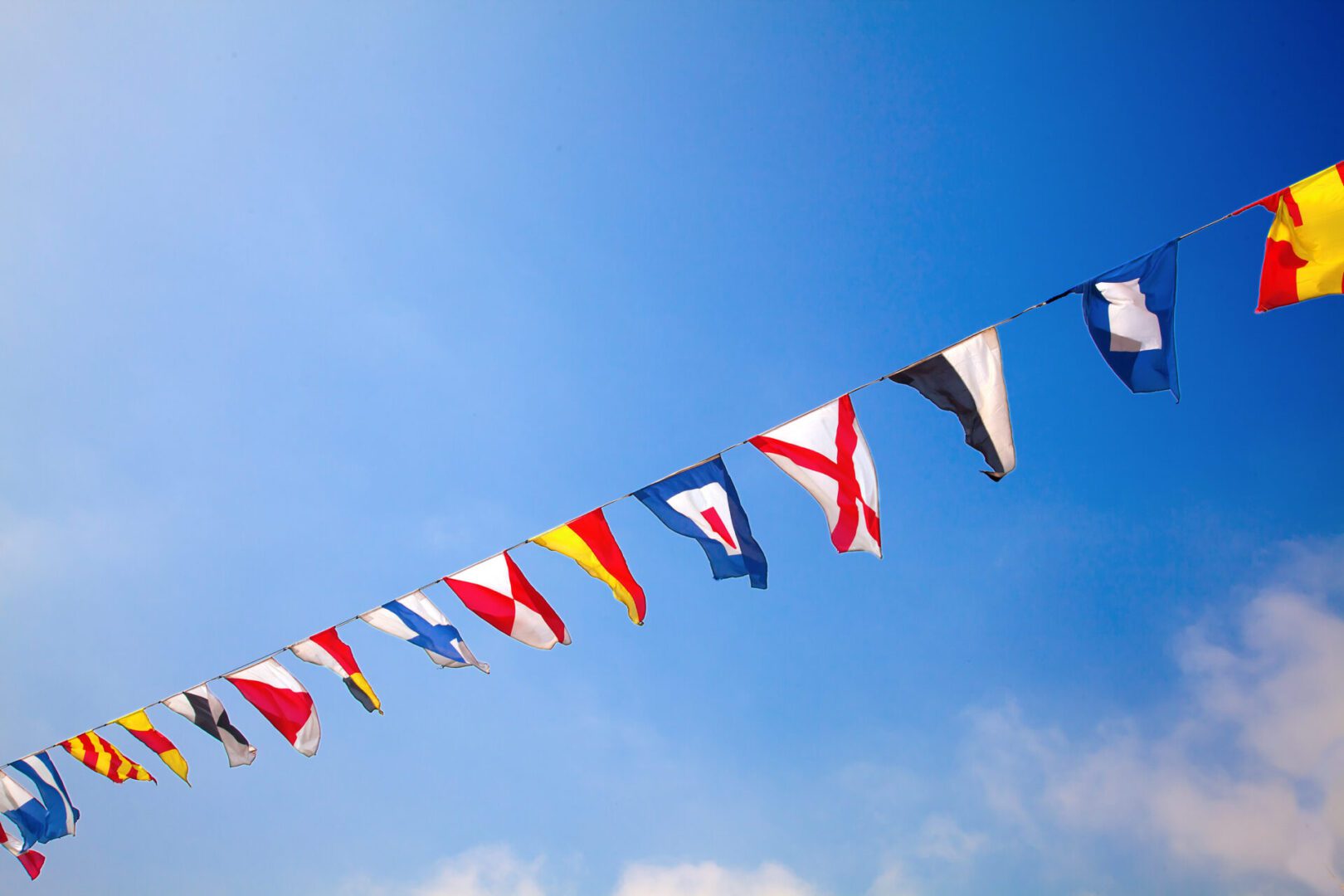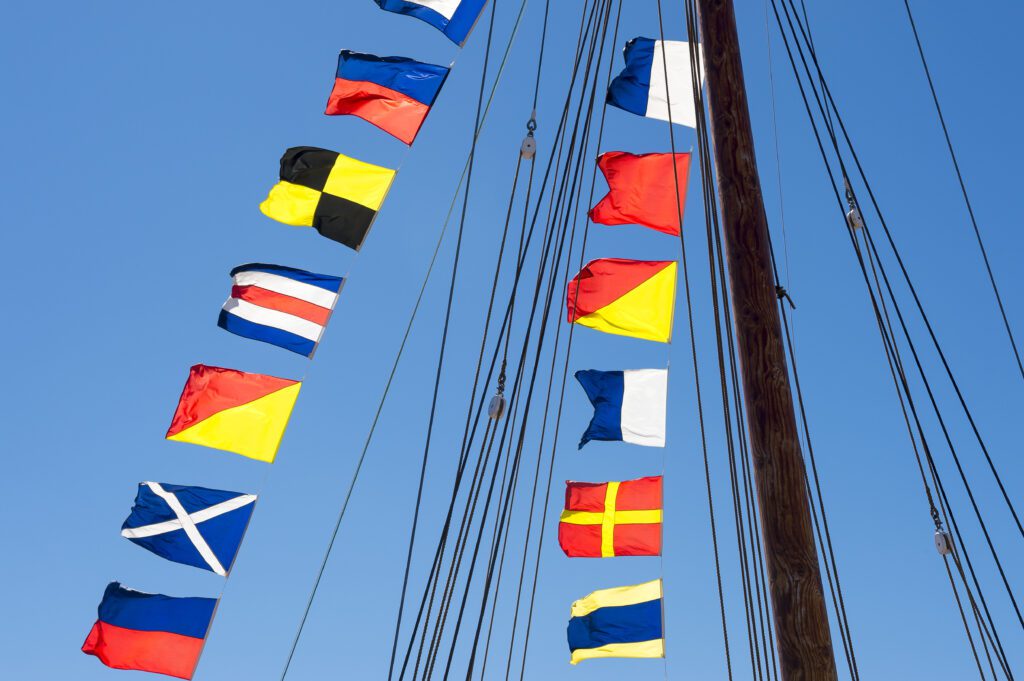
Coastal Signal Flags for Beginners
Nautical vessels, historically, have had trouble communicating with each other and the land. Recently, many ships use radios and digital remote commands to communication ship-to-ship and ship-to-shore. However, difficulties in communication can quickly arise due to language barriers, the weather changing quickly, and communication systems can fail. If any of these problems arise, maritime flags can be used to effectively communication with other ships and with the shore.
What Exactly are Coastal Flags?
Flags are used in the maritime industry to present different information to other ships and the people on-shore. They can show nationality, ownership, communication codes, and weather warnings. These flags provide quick information to other parties near or on the water so they can react appropriately. The most common type of flags that you may be familiar with are the International Maritime Signal Flags and Weather Warning Flags.

International Maritime Signal Flags
International Maritime Signal Flags are generally universal across all nations that have a marine presence. These flags are one of the major ways that ships communicate with each other. Although there are different ways of communication on the ocean, every naval sailor, merchant sailor, commercial sailor, and fisherman will understand what these flags mean. There are 26 unique flags, each representing a different letter of the alphabet as well as a code. These flags can be strung together to create words that other vessels can read and receive a message that way, but the most common use of these flags are the specific codes that they represent. These codes warn others of dangers in the area, maneuvering of the vessels, and requests that the ship may be making.
The flags all come in easy to see colors so that they can be easily recognized from far distances. These colors include blue, yellow, white, black, and red. The design and shape of these flags has changed drastically over the years, with the first set of code flags being issued in 17th century England. Developments were made over the years that eventually led the International Code of Signals being published in the mid-18th century. The modern International Code of Signals we know today was solidified after a final revision in the 1930s.
Weather Warning Signals
There are four different signals to indicate a weather warning. These include small craft warning, gale warning, storm warning, and hurricane warning.
SMALL CRAFT WARNING
- Indicates high speed winds up to 33 knots (38 mph)
- Single red pendant flag
GALE WARNING
- Indicates wind speed between 34 to 37 knots (39 to 54 mph)
- Two red pendant flags
STORM WARNING
- Indicates wind speed of 48 knots or more, or 48 to 63 knots (55 to 73 mph)
- Single square red flag with a black square in the middle
HURRICANE WARNING
- Indicates wind speed of 64 knots or more (74 mph), also known as a tropical cyclone
- Two square red flags with black squares in the middle
DIVING SIGNALS
There are two flags that represent when a boat or ship has divers in the water. These two flags are by law mandatory to be out in the United States and Canada when there are active divers in the water. In Canada, if the red and white flag is out in a soy of water, other boats are required to stay at least 100 meters away in any given direction. This is so that the divers can move around in the air safely. The other flag is called the Alpha Signal Flag, indicating other boats to go slow around certain areas because of divers. Today, the true signal means “divers below.” This flag is blue and white, color that are simple to recognize. There is one slight difference to the two flags. The red and white flag is mainly use to warn everyone that are are divers in the area (diver down flag) whereas the Alpha flag is to warn other vessels of possibly collision and to keep the divers protected from these vessels.
DISTRESS SIGNALS
These signals are used for preventing collisions at sea. There are a few ways to signal a warning to another ship or boat but one of the ways to communicate are through flags. The first flag is the International Code of Signals for “I am in distress and require immediate assistance”, also known as N and C (NOVEMBER AND CHARLIE). The second flag is named 46 Code of Federal Regulations, consisting of an organize flag with a black ball either above or next to a black square. Another signal that dates back many years in an inverted flag. The American flag should never be upside down unless it is being used as a symbol of distress. In order for this signal to be noticed, the flag must have a right side up in order to be able to invert it. many flags do not have a distinct right side up, therefore those flags should never try to be inverted.
If you’re looking for marine construction services, contact Sole Source Underwater at 401-712-2700.


